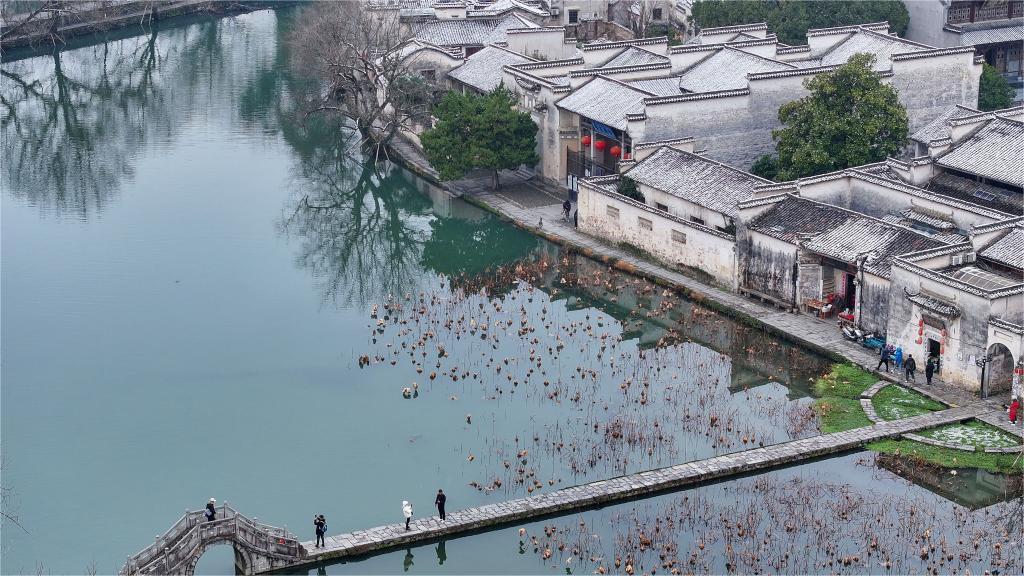China's improved emergency response brings relief to quake-affected people
XINING/LANZHOU, Dec. 21 (Xinhua) -- When the quake struck at midnight, 270 students in a boarding school in northwest China's Qinghai Province were fast asleep. However, after three minutes, they all managed to escape unharmed, just as they had been two hours earlier.
At 10 p.m. Monday, these students from the junior high school in Qingshui Township, Haidong City, were having an earthquake emergency drill, two hours before the 6.2-magnitude earthquake jolted northwest China.
"After we fell asleep, the beds rocked suddenly, when we realized that a real quake happened," said a year-eight student Ma Meiqi. "Some people shouted 'earthquake' while we ran along the wall to the playground in an orderly manner as what we usually did in the drills. There was no crowding and stampede."
Barimqen, who is in charge of dormitory management of the school, was born in the Yushu Tibetan Autonomous Prefecture which was ravaged by a 7.1-magnitude earthquake in 2010. More than 2,600 people were killed.
"I remember that disaster vividly," said the 25-year-old man. "Only by enhancing regular drills can we avoid casualties as much as possible."
In the past years, China has improved its emergency response system, in case of disasters like earthquakes, which has saved lives and reduced damages.
According to an unnamed official with the education department of Qinghai, apart from drills, they have strengthened the construction management and supervision of school buildings, so that the old buildings would either be demolished or reinforced, while new ones meet the seismic standards. This time in Haidong all 39,324 students from 81 boarding schools were evacuated safely after the quake without a single injury.
In the neighboring Gansu Province, where the epicenter is about 8 km from the county seat of the Bonan-Dongxiang-Salar Autonomous County of Jishishan, more than 270,000 people, mostly local cadres, were trained as the "first emergency respondents." The training included evacuating the masses, checking the risks, and leading villagers to start search and relief work barehanded or with simple tools.
Zhang Huilin, a 58-year-old Party secretary at Kexinmin village, led fellow villagers to save the victims immediately after the quake.
"He knew very well where each household was, even locations of senior people and children's bedrooms there," said an unnamed villager. "In the darkness, he took us door to door to locate and save people. Thanks to him, we managed to help each other before the rescuers arrived."
Two large-scale emergency quake drills were conducted in Gansu last year and earlier this year. Han Shujun, an inspector with the provincial emergency management department, told Xinhua that they initiated the rescue technology and tactics, and tested the adaptability of the rescue equipment as well as the ability of the rescue team under cold plateau conditions.
"This time the quake occurred in areas with high altitude amid cold waves in winter, but we managed to ensure the power supply of rescue equipment," he said.
Meanwhile, the commanders, fully aware of the populations in surrounding areas and locations of chemical enterprises, reservoirs, and mines, were able to make the right decisions, sending the nearest rescue team to the quake-hit sites.
Han Zhengming, head of the Gansu Provincial Emergency Management Department, said that he had seen the fastest and least panicked rescue work this time in the province.
Immediately after the quake, more than 4,500 rescuers and over 820 vehicles were mobilized to carry out search and rescue with full coverage of the affected areas.
Less than six hours after the quake, the first batch of 32 people and 10 vehicles from the Gansu branch of the Blue Sky Rescue Team, a Chinese civil relief squad, arrived at Jishishan. "As soon as we arrived, we started the investigation, transport, and setting up temporary resettlement sites," said the experienced team leader Yu Ruofei. The affected villagers have been provided with freshly cooked meals since Tuesday afternoon.
After a 40-minute drive on the icy mountainous road, Xinhua reporters starting from the county seat of Jishishan arrived at the Zhangguojia village at the epicenter, and visited some tents set up to shelter the evacuees.
Sitting by a stove, 86-year-old Zhang Guiying was holding a steaming bowl of noodles, with soft and glutinous potatoes easy to eat for elderly people like her. Beside her, there were relief supplies including vegetables, milk, bread, and several large bags of pastries sent by rescuers.
"The rescuers responded quickly to send us the food," she said, adding that she was not worried because she was sure she would "be taken care of after the disaster."
As of Wednesday night, the earthquake has killed 113 people in Gansu and 22 people in Qinghai. The tragic consequence suggested that improvement is still needed in the disaster prevention and emergency response system.
Han Shujun noted that the response-ability of the "first emergency respondents" at the grassroots level varied, thus more training would be needed so that they could react more quickly.
While monitoring and early warning are to be enhanced, local governments also need to raise awareness among villagers, especially in areas that haven't experienced earthquakes for a long time.
Photos
Related Stories
- Chinese armed forces deploy multiple rescue forces to quake-hit areas in Gansu
- Cascading waves of earth add to quake nightmare
- Orderly relief efforts continue in quake-hit Gansu
- 784 under treatment in hospital after earthquake in China's Gansu
- Emergency relief materials allocated to quake-affected people in Gansu
Copyright © 2023 People's Daily Online. All Rights Reserved.









